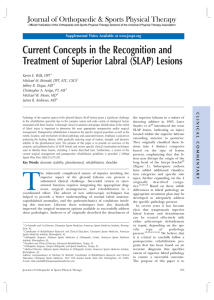“Diagnostic Accuracy of History and Physical Examination of
advertisement
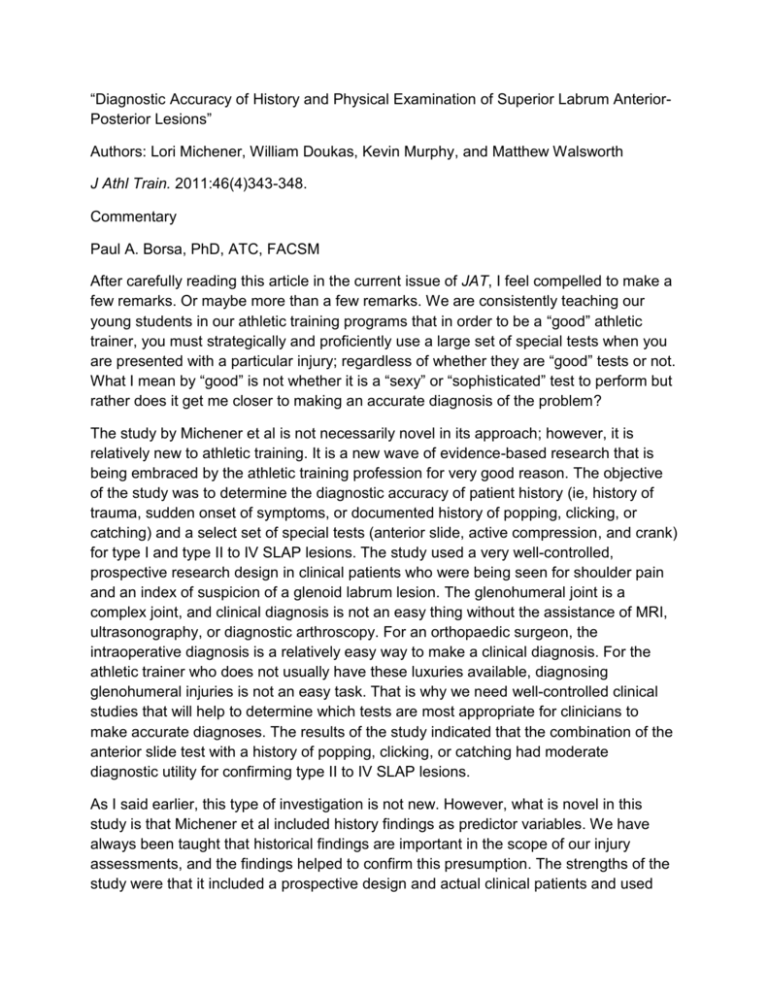
“Diagnostic Accuracy of History and Physical Examination of Superior Labrum AnteriorPosterior Lesions” Authors: Lori Michener, William Doukas, Kevin Murphy, and Matthew Walsworth J Athl Train. 2011:46(4)343-348. Commentary Paul A. Borsa, PhD, ATC, FACSM After carefully reading this article in the current issue of JAT, I feel compelled to make a few remarks. Or maybe more than a few remarks. We are consistently teaching our young students in our athletic training programs that in order to be a “good” athletic trainer, you must strategically and proficiently use a large set of special tests when you are presented with a particular injury; regardless of whether they are “good” tests or not. What I mean by “good” is not whether it is a “sexy” or “sophisticated” test to perform but rather does it get me closer to making an accurate diagnosis of the problem? The study by Michener et al is not necessarily novel in its approach; however, it is relatively new to athletic training. It is a new wave of evidence-based research that is being embraced by the athletic training profession for very good reason. The objective of the study was to determine the diagnostic accuracy of patient history (ie, history of trauma, sudden onset of symptoms, or documented history of popping, clicking, or catching) and a select set of special tests (anterior slide, active compression, and crank) for type I and type II to IV SLAP lesions. The study used a very well-controlled, prospective research design in clinical patients who were being seen for shoulder pain and an index of suspicion of a glenoid labrum lesion. The glenohumeral joint is a complex joint, and clinical diagnosis is not an easy thing without the assistance of MRI, ultrasonography, or diagnostic arthroscopy. For an orthopaedic surgeon, the intraoperative diagnosis is a relatively easy way to make a clinical diagnosis. For the athletic trainer who does not usually have these luxuries available, diagnosing glenohumeral injuries is not an easy task. That is why we need well-controlled clinical studies that will help to determine which tests are most appropriate for clinicians to make accurate diagnoses. The results of the study indicated that the combination of the anterior slide test with a history of popping, clicking, or catching had moderate diagnostic utility for confirming type II to IV SLAP lesions. As I said earlier, this type of investigation is not new. However, what is novel in this study is that Michener et al included history findings as predictor variables. We have always been taught that historical findings are important in the scope of our injury assessments, and the findings helped to confirm this presumption. The strengths of the study were that it included a prospective design and actual clinical patients and used appropriate tests as predictor variables with the intraoperative diagnosis serving as the reference standard. Many patients were found to have comorbidities with the labral lesion, and this seemed to make things a little murky from a diagnostic standpoint, but that’s “real life.” In closing, I commend the authors for taking on such a challenging endeavor, and I thoroughly enjoyed reading the paper. One thing I would like to see in future studies is athletic trainers, in addition to orthopaedic surgeons, being called on as examiners. Being able to add new data to the existing body of literature is always a positive, and I wholeheartedly look forward to seeing more studies published using this approach. They may vary in their final conclusions, but they get us closer to the bottom line. Take a look and let me know what you think, I’d love to hear what you have to say. Cheers and many happy diagnoses!


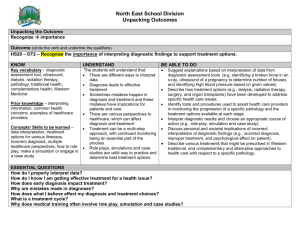


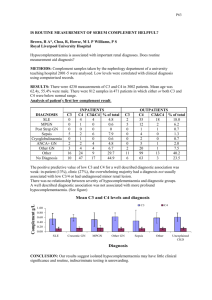
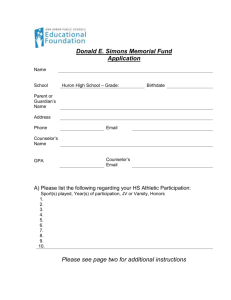
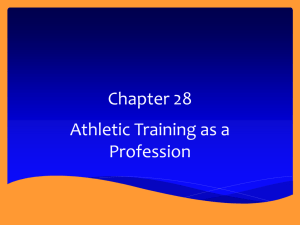
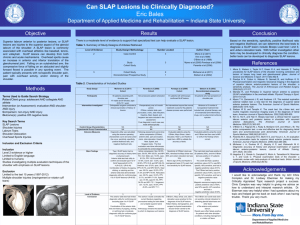
![S [ ] SLAP Lesions: An Update on](http://s2.studylib.net/store/data/010804765_1-53b49bd6580b311794b2156690c8e10c-300x300.png)
